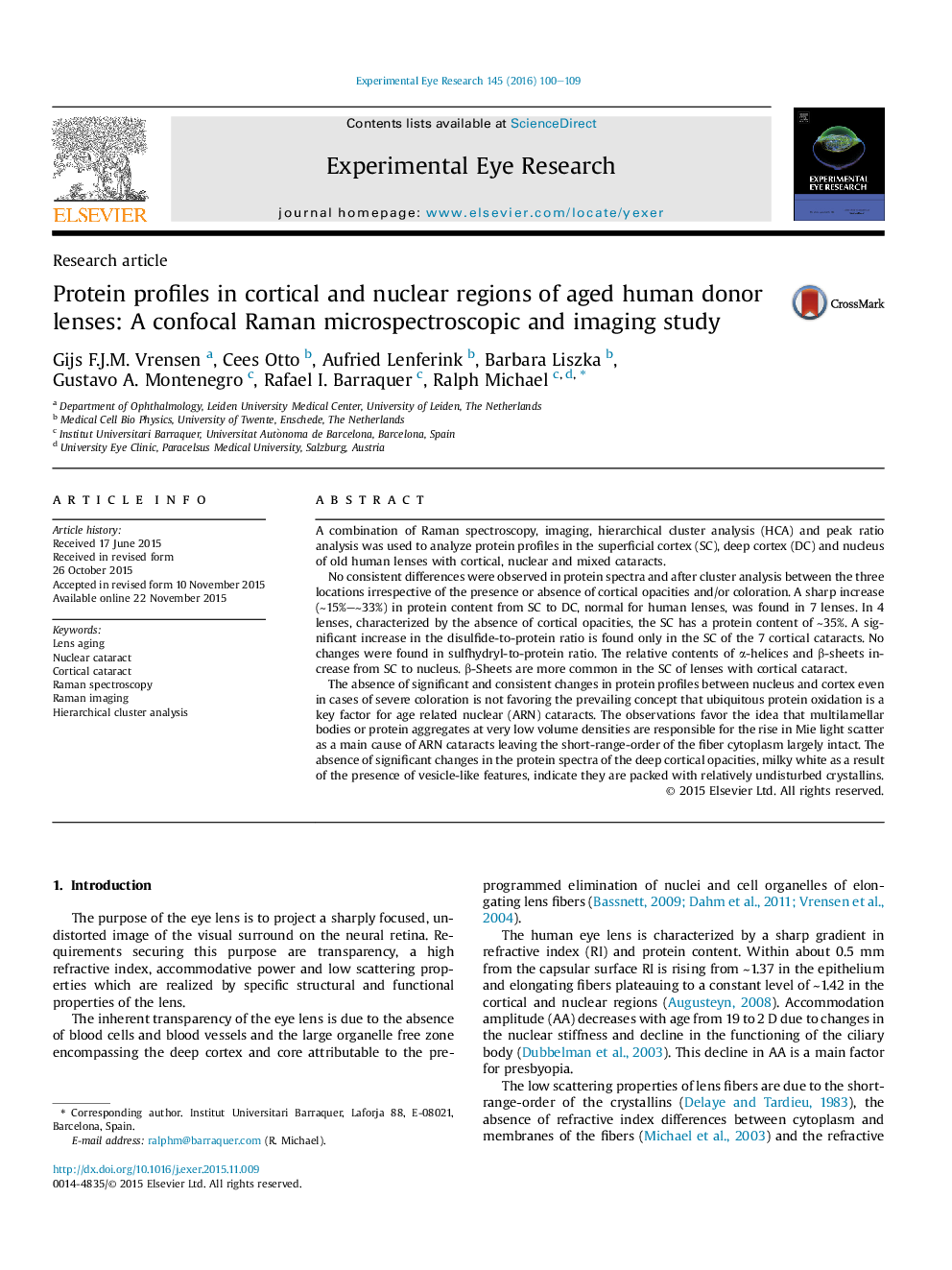| کد مقاله | کد نشریه | سال انتشار | مقاله انگلیسی | نسخه تمام متن |
|---|---|---|---|---|
| 6196451 | 1602577 | 2016 | 10 صفحه PDF | دانلود رایگان |
- Conformation of crystallins unaltered in aged lenses.
- Conformation of crystallins unaltered in nuclear and cortical cataracts.
- Nuclear cataract dominated by Mie scattering.
- Cortical cataract dominated by Tyndall scattering.
A combination of Raman spectroscopy, imaging, hierarchical cluster analysis (HCA) and peak ratio analysis was used to analyze protein profiles in the superficial cortex (SC), deep cortex (DC) and nucleus of old human lenses with cortical, nuclear and mixed cataracts.No consistent differences were observed in protein spectra and after cluster analysis between the three locations irrespective of the presence or absence of cortical opacities and/or coloration. A sharp increase (â¼15%-â¼33%) in protein content from SC to DC, normal for human lenses, was found in 7 lenses. In 4 lenses, characterized by the absence of cortical opacities, the SC has a protein content of â¼35%. A significant increase in the disulfide-to-protein ratio is found only in the SC of the 7 cortical cataracts. No changes were found in sulfhydryl-to-protein ratio. The relative contents of α-helices and β-sheets increase from SC to nucleus. β-Sheets are more common in the SC of lenses with cortical cataract.The absence of significant and consistent changes in protein profiles between nucleus and cortex even in cases of severe coloration is not favoring the prevailing concept that ubiquitous protein oxidation is a key factor for age related nuclear (ARN) cataracts. The observations favor the idea that multilamellar bodies or protein aggregates at very low volume densities are responsible for the rise in Mie light scatter as a main cause of ARN cataracts leaving the short-range-order of the fiber cytoplasm largely intact. The absence of significant changes in the protein spectra of the deep cortical opacities, milky white as a result of the presence of vesicle-like features, indicate they are packed with relatively undisturbed crystallins.
Journal: Experimental Eye Research - Volume 145, April 2016, Pages 100-109
